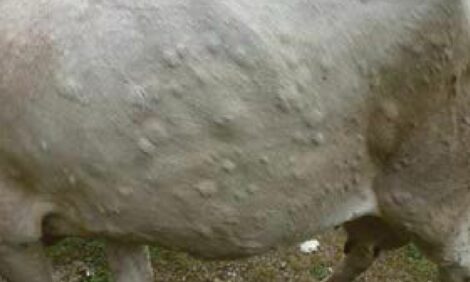



Latest M. bovis TAG report shows New Zealand is on track to eradicate the disease
The latest report from the independent Technical Advisory Group (TAG) for the Mycoplasma bovis (M. bovis) response shows New Zealand is on track to eradicate the disease.“The TAG report acknowledges the improvements to our work, which aim to lessen the impact on affected farmers, their whanau, workers and rural communities,” says M. bovis Programme Director Stuart Anderson.
“I know that farmers who have been impacted have found the process challenging. Their contribution has not gone unnoticed or unappreciated and four years on since the disease was first detected, immense progress has been made towards eradication. We now have just three active confirmed infected farms compared to 34 farms two years ago.”
The TAG found:
- There have been notable improvements in the timeliness of tracing and casing of herds and management of confirmed infected herds since 2019
- Beef Surveillance and Bulk Tank Milk screening are working well
- There have been improvements in the recording of animal movements by farmers
- Thanks to operational improvements, the Canterbury cluster identified last spring was rapidly found and controlled
- Genomic information continues to support that bovis was likely introduced around late 2015 via a single source.
The TAG made 14 recommendations for the Programme, all of which are accepted. These include advice regarding monitoring of beef herds and non-milking dairy cows and what is required to move from delimiting to the provisional freedom of infection phase over the next year.
The TAG found that improvements to the Programme meant it was in a good position to deal with any further infected farms identified, which was likely given some farms’ previously poor recording of cattle movements and the likelihood that unidentified small pockets of infection may remain to be found.
Stuart Anderson said the TAG found the recent Canterbury cluster could most likely be explained by unrecorded animal movements, and they recommended the likelihood that the Five Star Feedlot could be a possible source of infection be examined closely.
“Since the TAG first considered information in December, we have looked into this property closely, tested animals and traced movements,” he said.
“In the Programme’s view there are more likely sources from within the cluster of infected farms itself, such as animal movements, shared grazing, insecure boundaries between neighbouring properties and sharing of dairy platforms.
“However, out of an abundance of caution, and in co-ordination with the feedlot’s owners, ANZCO, we’ve placed a buffer area around the feedlot that will remain free of cattle until it is cleared of M. bovis. This is on top of the already strict biosecurity measures that are in place and being adhered to.”
Over the coming months, the Programme will work closely with ANZCO on depopulation of the feedlot. The exact timing of this has not been determined and needs to be planned well in advance.
“The feedlot is of significant economic importance to the local community and careful consideration is required to minimise the impact of the depopulation exercise on all those connected to it,” Stuart Anderson said. “This includes not only the feedlot’s staff and contractors, but also the farmers nationwide who supply it with livestock and feed grains.”
Sam McIvor, chief executive of B+LNZ, said: “Farmers can take a lot of credit for the progress of the eradication programme.
“We are on track to eradication, however there’s still a lot of hard work ahead of us. We’re urging every farmer to record all animal movements and keep their NAIT records up to date.
Incomplete NAIT records make tracing infected cattle a difficult and expensive job, which ultimately costs all farmers and means some endure movement controls on their farms that otherwise wouldn’t be required.”
DairyNZ chief executive Dr Tim Mackle said eradicating M. bovis has been a key goal for New Zealand and it’s pleasing to see the commitment by farmers is delivering.
“Managing M. bovis has been a significant challenge for our farmers and presented an upheaval for many who made sacrifices for the greater good,” said Dr Mackle.
“Now, continuing with good practices is crucial and respects those sacrifices that many have made. So NAIT, biosecurity and farm management practices remain as important as ever.
“Keep up the good work – record all cattle movements, ensure good biosecurity practice is in place on your farm and prevent any mixing of stock.”



